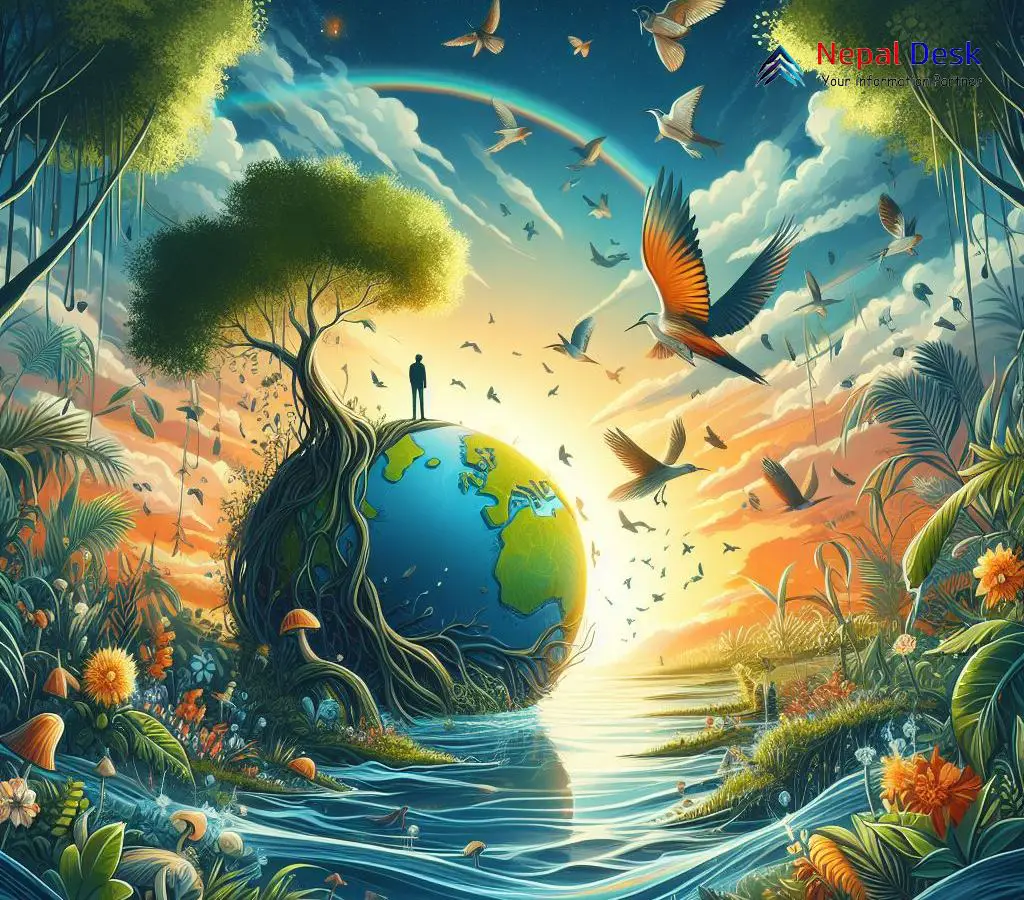Nepal Celebrates Its Rich Wetlands on World Wetlands Day 2024
Published Date

Published Date
Explore Nepal's celebration of World Wetlands Day 2024, spotlighting over 200 wetlands crucial for biodiversity, human wellbeing and ecosystems.
⏱ 2 min read
In commemoration of World Wetlands Day 2024 themed "Wetlands and Human Wellbeing", Nepal spotlighted its spectacular array of over 200 wetlands spanning 5% of national land and playing integral environmental roles underpinning community health and safety across the vulnerable Himalayan country.
These diverse wetland ecosystems from tranquil high-altitude lakes to Terai grasslands represent global biodiversity hotspots hosting vital habitats for numerous endangered species while supporting wetland rice harvesting and storm protection ecosystem services benefiting Nepal's population. Designated Ramsar sites like Rara Lake conserve rare endemic fish and migratory cranes while providing ecotourism jobs balancing conservation aims.
Marking February 2nd through educational workshops, cleanliness drives, and expert seminars, Nepali citizens and conservation groups raised awareness on ecological and economic wetland services like water filtration, flood control, and agrobiodiversity reliance of indigenous groups, urging policy enhancements preventing degradation from encroachment, infrastructure, and climate risks exacerbated by global heating.
Participant authorities highlighted Nepal's longstanding Ramsar Convention commitments safeguarding 60,000 wetland hectares through 10 designated Wetlands of International Importance sites protecting the country’s reputation as a proud haven for rare waterbirds, rhinos, dolphins, crocodiles, and apex Gharial species threatened by habitat erosion. Panelists emphasized balancing community access facilitating sustainable harvesting of wetland resources and preserving sufficient zones, enabling wildlife migrations essential to upholding ecological richness benefitting current and future generations if responsibly managed.
The celebrations spotlighted the wetland's role in underwriting national food, water, and health securities urging expanded grassroots participation and investments necessary to shield Nepal’s vulnerable low-lying Tarai plains serving as the country’s agricultural breadbasket while accelerating conservation education practical skills sharing upholding these pivotal buffers against looming climate uncertainties ahead.
Wetland's Role in Ecosystem
Wetlands play a vital role in supporting healthy ecosystems in multiple ways:
- Habitat Provision - Wetlands support rich biodiversity by providing ideal habitats for numerous species of fish, birds, amphibians, insects, and aquatic plants. Over 40% of the world's species live or breed in wetlands.
- Water Regulation - Wetlands act like natural sponges, storing flood waters and maintaining water flow in associated lakes and rivers. This regulates floods downstream and stabilizes the water supply during dry periods.
- Filtering Function - As water flows through them, wetlands retain sediments, pollutants, and nutrients filtering water effectively improving downstream water quality.
- Erosion Control - Wetland vegetation helps bind soil preventing shoreline erosion and land loss stabilizing river channels against strong storm flows and tidal changes.
- Carbon Sequestration - By capturing carbon dioxide and methane, wetlands serve as natural carbon sinks of global significance helping regulate greenhouse gases linked to climate change.
In essence, wetlands sustain biodiversity, moderate water availability, control pollution, and limit erosion impacts while regulating climate stability demonstrating why their conservation remains imperative for ecological health across interconnected habitats benefitting both human and environmental wellbeing.
